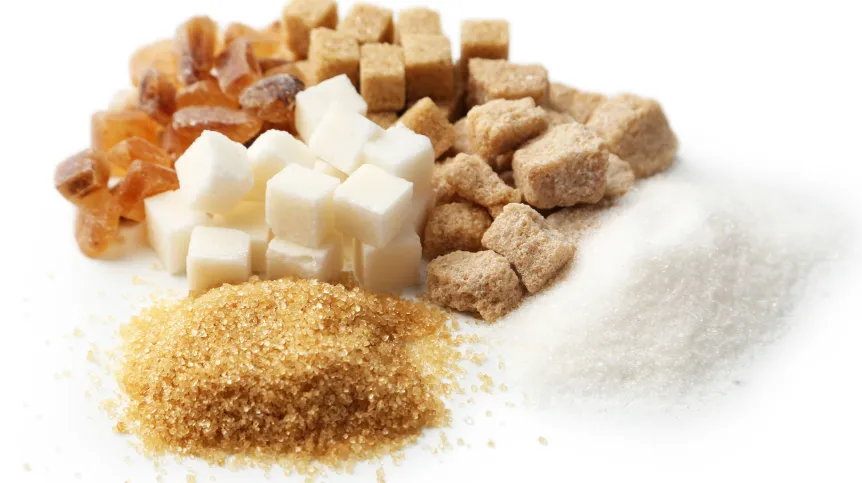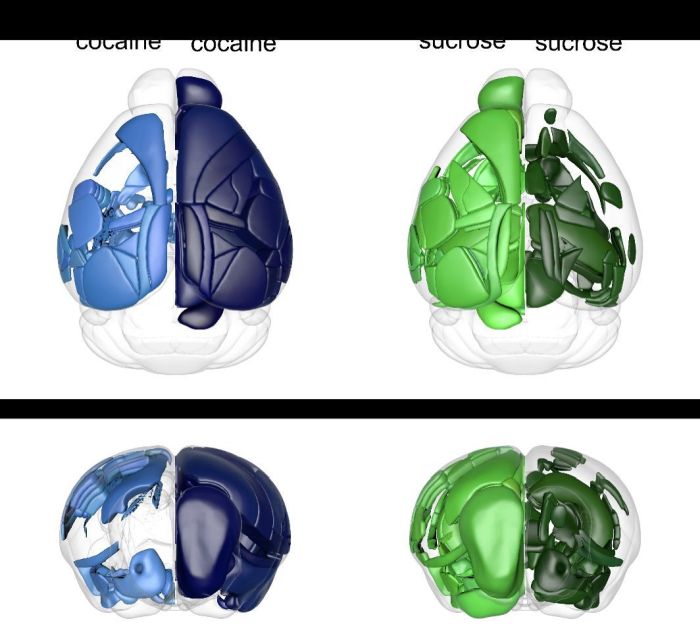
Most of the brain structures activated by sugar consumption and drug use overlap. However, while the first contact with sugar causes a massive response throughout the brain, even outside the reward system, the first contact with the drug is not that intense, Polish neurobiologists say.
This shows how important the information about access to sweet - and therefore caloric - food is for the body. Even more differences emerge when the body is exposed to each of these two substances for a longer period.
Researchers from the Center of Excellence for Neural Plasticity and Brain Disorders BRAINCITY at the Nencki Institute of Experimental Biology have determined and described inTranslational Psychiatry which brain centres are responsible for processing stimuli related to exposure to natural (like sweet food) and addictive (like drugs) rewards.
SWEET WATER LIKE COCAINE?
The research was conducted on laboratory mice. “We wanted to show how the brain processes information about rewards,” Dr. Anna Beroun, author of the publication and head of the Neuronal Plasticity Laboratory told PAP. “For this purpose, we chose two different positive stimuli: sweet water and cocaine. We used light-sheet imaging, which allowed us to look at the entire hemisphere of the brain and watch all the structures at once.”
In order to be able to look so deep and at the same time preserve the structure of the brain and all the existing connections, Dr. Beroun and colleagues had to subject the mouse brains to a procedure called optical clearing. This technique involves washing out lipids from the tissue, making the brains transparent so that light can pass through their entire thickness without being scattered.
“In our experiment, we were able to image almost 400 structures activated by sugar or cocaine,” Beroun said.
Mice, like humans, are very fond of sweet taste. The researchers provided them with constant access to sweet water or plain drinking water. Rodents from another group were given cocaine injections. Beroun said: “When given the opportunity to self-administer cocaine, mice become addicted to it just like humans. In our experiment, by injecting them with cocaine, we produced so-called locomotor sensitisation, so we got an increasingly stronger effect (observed as greater motor activity) after each subsequent dose of the drug.”
The researchers observed changes in the brains in two stages: immediately after the first contact with the reward and after seven days of daily exposure. They also measured the impact of both substances in two ways: the above-mentioned imaging, which allowed to simultaneously analyse all structures, and using electrophysiology to study the strength of the connections of living cells in one selected structure, specifically the nucleus accumbens.
The researcher explained that the reward system is responsible for processing positive stimuli that reach the mouse or the human body. It consists of many different structures, including ventral tegmental area, prefrontal cortex, hippocampus. This system also includes the striatum with its part - the nucleus accumbens, which is responsible for the motivation to seek and obtain a reward. In the event of contact with a new, previously unknown stimulus, the reward system in conjunction with other structures helps to decide whether it is a positive or negative stimulus and remembers it for future acquisition and experience.
SUGAR AND DRUG ACTIVATE THE SAME BRAIN CENTERS, BUT DO IT DIFFERENTLY
Dr. Beroun said: “Our experiment showed that the first exposure to sugar caused a huge activation in virtually the entire brain, not only in the reward system. This shows how important the information about access to sweet (and therefore caloric) food is for the body. But in mice that had access to sweet water for seven days, we did not see such global activation. After that time, sugar was no longer a new stimulus for them, the information about access to the reward was remembered.”

The situation was different with cocaine. While the first contact with it did not cause as many changes as the first contact with sugar, longer access to the drug (one dose a day for seven days) caused a global brain stimulation, much greater than in the case of sweet water. In addition to a greater number of structures activated by repeated administration of cocaine, the researchers also noticed differences in brain modularity. Modules are groups of structures that work together to process a given stimulus or behaviour. According to one hypothesis, the more modules there are, the better the synaptic plasticity, and thus the more efficient the transfer and analysis of information.
Dr. Beroun said: “In our experiment, we observed that a single administration of a reward, both sugar and cocaine, increased the modularity of the brain. However, with repeated administration, only the drug maintained the increased modularity of the structures, and sugar did not.”
As for the structures activated by sugar and cocaine, they overlapped in most cases, but the researchers also located a few that were specific to one reward. For a more detailed analysis, they selected the nucleus accumbens, which showed high activity with both natural and pharmacological reward. Beroun said: “We looked at the adaptations of the synapses of neurons located in it. We know from the literature that cocaine creates immature connections in this region, called silent synapses. When they mature, these synapses are responsible for seeking the drug. We found that sugar, like the drug, formed such silent synapses, but we still don't know what happens to them - whether they mature over time and strengthen the connections between cells, or they disappear. We also do not yet know whether other structures in the brain activated by sugar and cocaine (e.g. those outside the reward system) make similar connections.”
NOT ALL ADDICTIONS ARE EQUAL
She continued: “Despite many years of research, we do not yet have a clear answer for why sugar is not as addictive as a drug. Are there other brain mechanisms unrelated to the reward system that account for this difference? What has the biggest influence on the great power of cocaine addiction?
'Solving this mystery puzzles neuroscientists around the world. It is believed that at the first contact, natural rewards (e.g. sweet food) cause the release of dopamine - a neurotransmitter modulating the electrical excitability of neurons and facilitating the processes of synaptic plasticity, i.e. changing the strength or number of synapses in response to external stimuli. Synaptic plasticity is often associated with remembering information and creating memories. It is normal that subsequent contact with the same stimulus does not cause such a strong activation of dopamine neurons. Drugs such as cocaine, on the other hand, artificially increase the availability of dopamine due to their pharmacological effects. Whether it is the first or several exposure to the drug, it will still induce changes in the brain that make it easier to form memories of the drug.”
An interesting fact is that there are differences between whether someone else gives us cocaine or we reach for it ourselves. Research suggests that the ability to self-administer evokes stronger associations.
BETTER UNDERSTANDING IS BETTER POSSIBILITY TO HELP
Dr. Beroun and her team's research is aimed at understanding the mechanisms that control the formation of appetitive memory, a particular example of which is the development of addiction.
She said: “Knowing that natural and addictive substances activate the brain in similar ways, we want to find out why in some cases people develop an addiction and in others they do not. All this so that in the future we can better help people affected by this problem.”
Finds out more in the source material. (PAP)
Katarzyna Czechowicz
kap/ bar/
tr. RL













